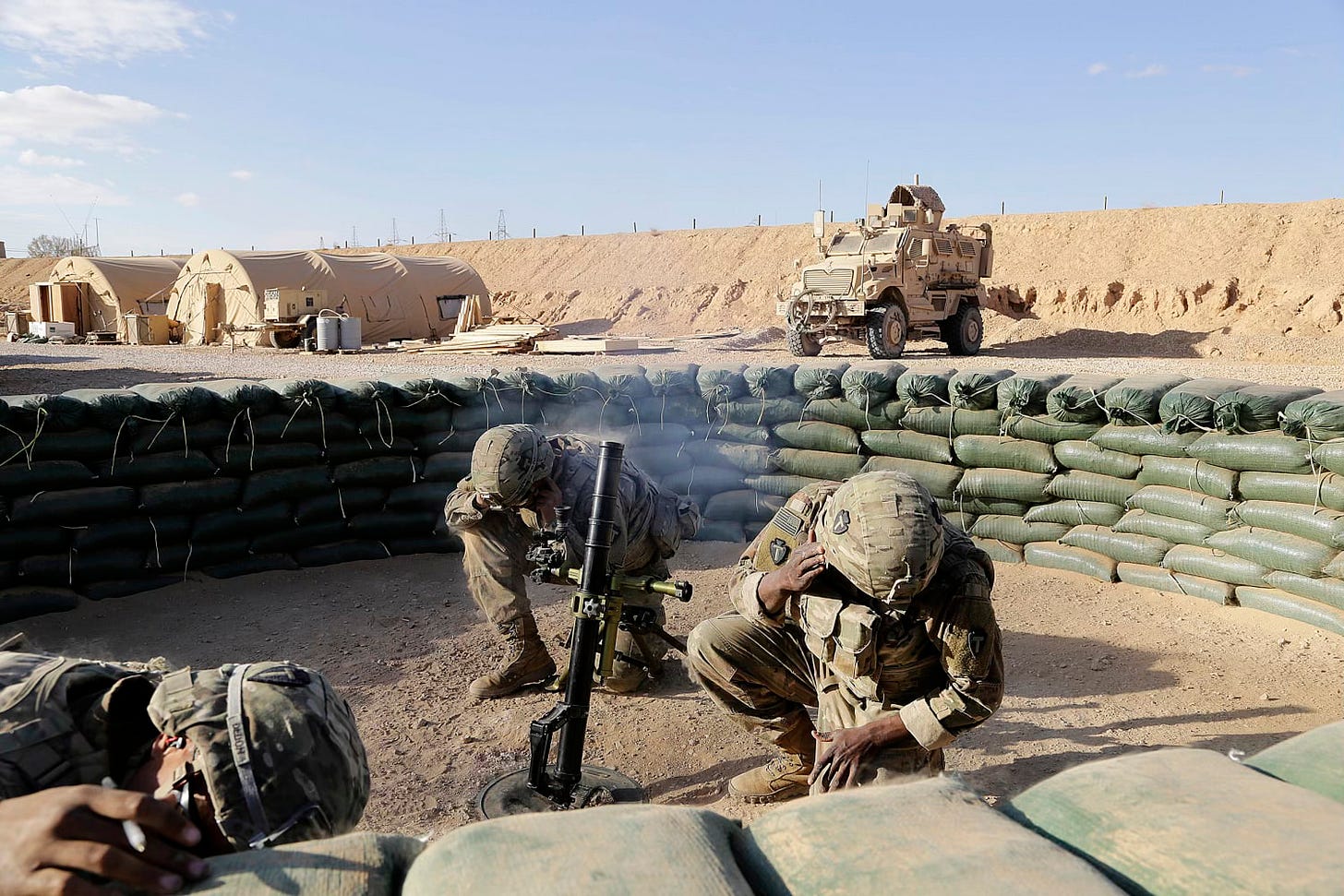U.S. Engaged in Combat 226 Days Last Year
The wars Washington doesn't like to talk about
A year ago this week, Reuters reported a single sentence dispatch from Iraq that a U.S. airstrike “foiled” an attack on Ain al-Asad airbase in Iraq, where U.S. and other international forces were stationed.
It wasn’t the first instance of combat in 2024, and amidst the confusion of Secretary of Defense Austin’s secret hospitalization last January, all Pentagon spokesperson Major General Pat Ryder said when asked was that Austin along with President Biden had “pre-approved” an airstrike near Baghdad. He was referring to two separate incidents, but as Ryder himself said, he wasn’t quite sure, because what the United States military did out there in the Middle East was both automatic and unremarkable.
January 8 is a random day, but on 226 days like it last year, the U.S. military “foiled” another attack. In Syria, Jordan, Israel, Iraq and Yemen, as well as in Somalia, at sea and from remote bases, American forces attacked or were attacked by drones and rockets and missiles and ground fighters. This remarkable record, which we pieced together from press releases, social media postings, and unit records, shows not just the constant dangers that exist for our troops but also how invisible the reality of war is these days.
This state of perpetual war has more or less been the state of affairs for the past decade and 2024 was a good illustration. Yemen replaced Afghanistan in 2024, the active defense of Israel against Iran was added, combat went up there, declined elsewhere. But it was still combat, occasions where the armed forces were actively in harm’s way, our forces in danger of either death or injury.
226 days is particularly extraordinary because both President Biden and Vice President Harris bragged during the year that they were presiding over an unprecedented year of peace.
On July 24, Biden said that he was “the first president this century to report to the American people that the United States is not at war anywhere in the world.”
“As of today,” Harris said in her debate with Donald Trump on September 10, “there is not one member of the United States military who is in active duty in a combat zone in any war zone around the world, the first time this century.”
It wasn’t even the first time in hours, as I reported at the time.
Using those two random days (July 24 and September 10) as examples gives a sense of how out of touch those in Washington are with the reality, both as seen by America’s enemies and by the Pentagon leadership.
On July 24, while Biden was patting himself on the back for the era of peace he had ushered in, U.S. Central Command in the Middle East announced that its forces “successfully destroyed two Iranian-backed Houthi missiles on launchers” in Yemen, an attack by unnamed aircraft from unnamed locations. On September 10, the U.S. was at it again, “successfully” destroying five Houthi drones and missile. Later in the day, an Iran-backed militia group attacked U.S. military personnel and State Department civilians in Iraq. “We reiterate that we reserve the right to self-defense and to protect our personnel anywhere in the world,” the U.S. Embassy in Baghdad stated.
As the Pentagon describes it, everything it does is “successful” and it is always in self-defense. In their mind, when aircraft bomb enemy positions and encampments, or when the armed forces (including ships at sea) shoot artillery and short-range missiles, or when soldiers and special operators engage the enemy on the ground, it is not “combat.” And, by the government’s insistence, since it always is done with or on behalf of America’s various “partners” it is not war. There is no war, no war zone, no combat. In that way, the dangers and the costs are hidden from public view.
We tested the proposition as to whether any of these events are controlled by politics by looking more closely at the pace of combat around important political events. But the rate of engagements do not seem to let up for anything. U.S. forces attacked ISIS militias in Syria in the days leading up to the November 5th election, repeatedly.
The hope, now that Donald Trump is returning to office, is that the self-professed “America First” president and his advisors will look more closely at where U.S. forces are around the world, what they are doing, and why. It’s easy to just brush it all under the rug saying that ISIS, the Houthi, Iranian militias or al Shabaab shot at us first, that we are only helping our friends, or that we are only acting in self-defense.
None of that answers the question of when will it all end, or what are we accomplishing. Trump has already bragged that he will end the war in Ukraine and that Hamas better released the hostages “or else,” but before the Pentagon starts planning non-combat, self-defense operations in Greenland, perhaps we could get our shit together where it matters.
— Edited by William M. Arkin


"the constant dangers that exist for our troops" The real end of the sentence should be "the constant dangers that exist for the entire world." Other than that, just another normal, nothing to see here, year in the military-fantasyland of the USofA.
Oceana must always be at war. The heathen threat of Eurasia and Eastasia cannot be ignored!